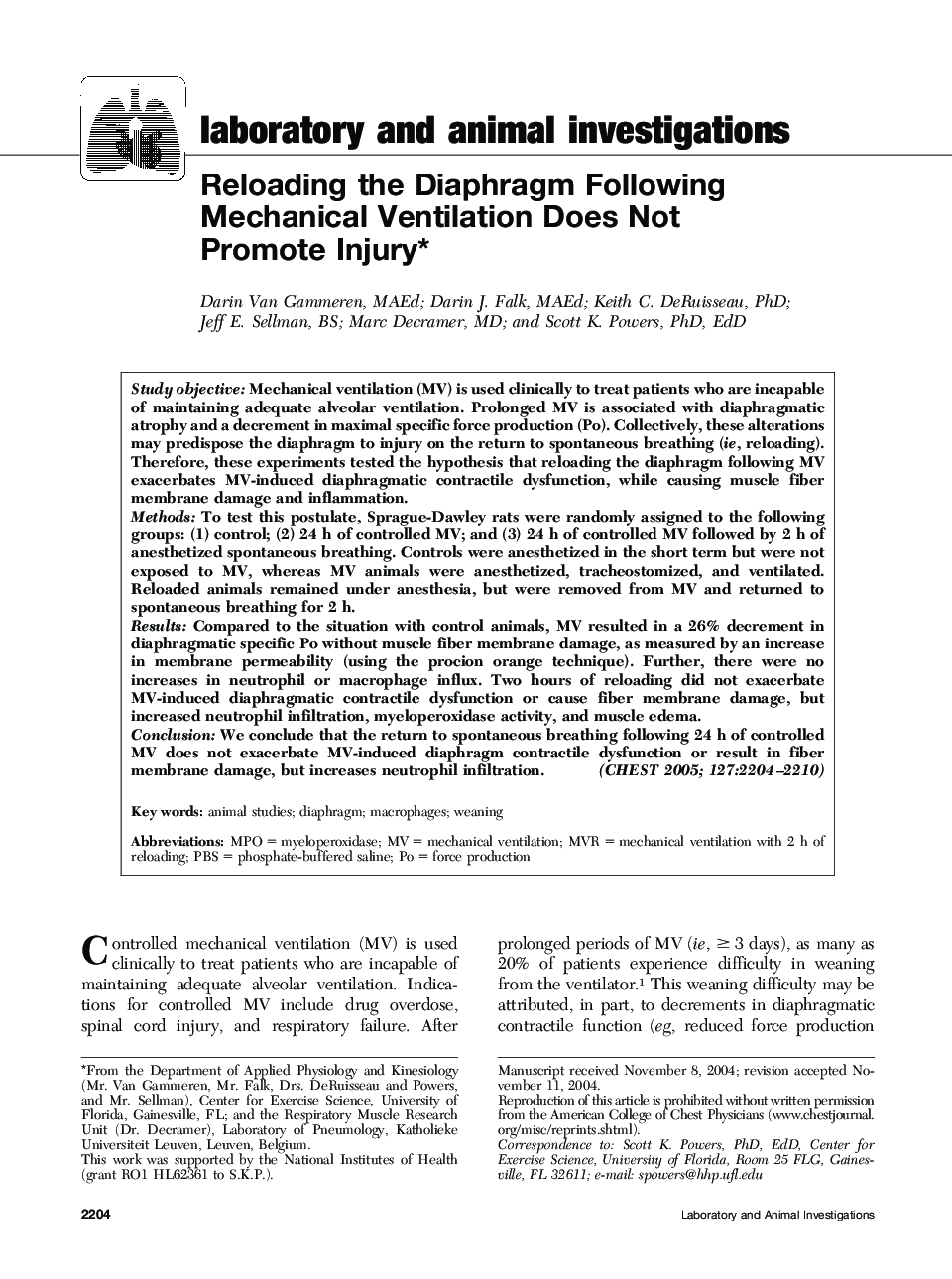| Article ID | Journal | Published Year | Pages | File Type |
|---|---|---|---|---|
| 2904809 | Chest | 2005 | 7 Pages |
Study objectiveMechanical ventilation (MV) is used clinically to treat patients who are incapable of maintaining adequate alveolar ventilation. Prolonged MV is associated with diaphragmatic atrophy and a decrement in maximal specific force production (Po). Collectively, these alterations may predispose the diaphragm to injury on the return to spontaneous breathing (ie, reloading). Therefore, these experiments tested the hypothesis that reloading the diaphragm following MV exacerbates MV-induced diaphragmatic contractile dysfunction, while causing muscle fiber membrane damage and inflammation.MethodsTo test this postulate, Sprague-Dawley rats were randomly assigned to the following groups: (1) control; (2) 24 h of controlled MV; and (3) 24 h of controlled MV followed by 2 h of anesthetized spontaneous breathing. Controls were anesthetized in the short term but were not exposed to MV, whereas MV animals were anesthetized, tracheostomized, and ventilated. Reloaded animals remained under anesthesia, but were removed from MV and returned to spontaneous breathing for 2 h.ResultsCompared to the situation with control animals, MV resulted in a 26% decrement in diaphragmatic specific Po without muscle fiber membrane damage, as measured by an increase in membrane permeability (using the procion orange technique). Further, there were no increases in neutrophil or macrophage influx. Two hours of reloading did not exacerbate MV-induced diaphragmatic contractile dysfunction or cause fiber membrane damage, but increased neutrophil infiltration, myeloperoxidase activity, and muscle edema.ConclusionWe conclude that the return to spontaneous breathing following 24 h of controlled MV does not exacerbate MV-induced diaphragm contractile dysfunction or result in fiber membrane damage, but increases neutrophil infiltration.
